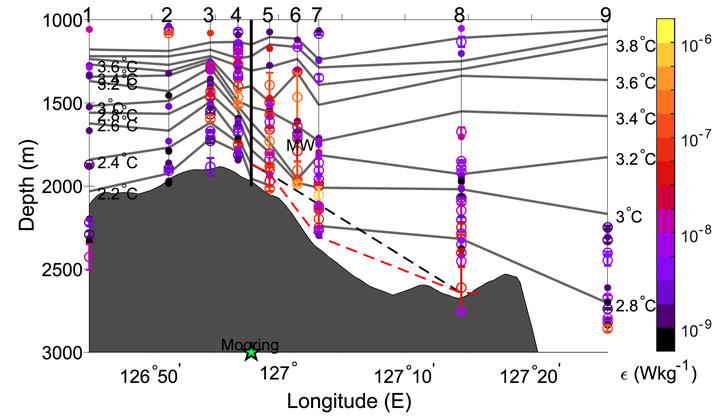Flow hydraulics in deep ocean passages
 Tan et al. (2020)
Tan et al. (2020)“Hydraulics” is a nebulous term that evokes images of pumps, dams, brake fluid and lifting machines. In geophysics the term has been applied to wind or current systems that exhibit behavior found in spillways, aqueducts, dams and other open channel engineering applications. Many oceanic and atmospheric flows are topographically constrained in the same way that rivers and reservoirs are, and so it is not surprising that similar physical features arise. For instance, the spillage of dense air over a mountain range and the resultant strong down-slope winds are visually and dynamically similar to the flow of water over a dam or weir. Overflows of dense water flowing along the ocean bottom or in sea straits exhibit similar behavior. – Pratt and Whitehead (2008), Rotating Hydraulics
Hydraulic phenomena are found in passages connecting ocean basins, serving as conduits for the Meridional Overturning Circulation (MOC); in submarine canyons along continental slopes, playing a key role in shelf-ocean transport; and in glacier fjords, where they are critical to ice-sea interactions. In particular, these flows are often accompanied by strong instabilities and turbulent mixing, acting as ‘hotspots’ for water mass transformation and the transport of heat, nutrients, and gases. For example, hydraulically controlled flow occurs in the Lifamatola Passage in the Indonesian Seas, with elevated turbulent mixing downstream of the sill (see the headline figure).